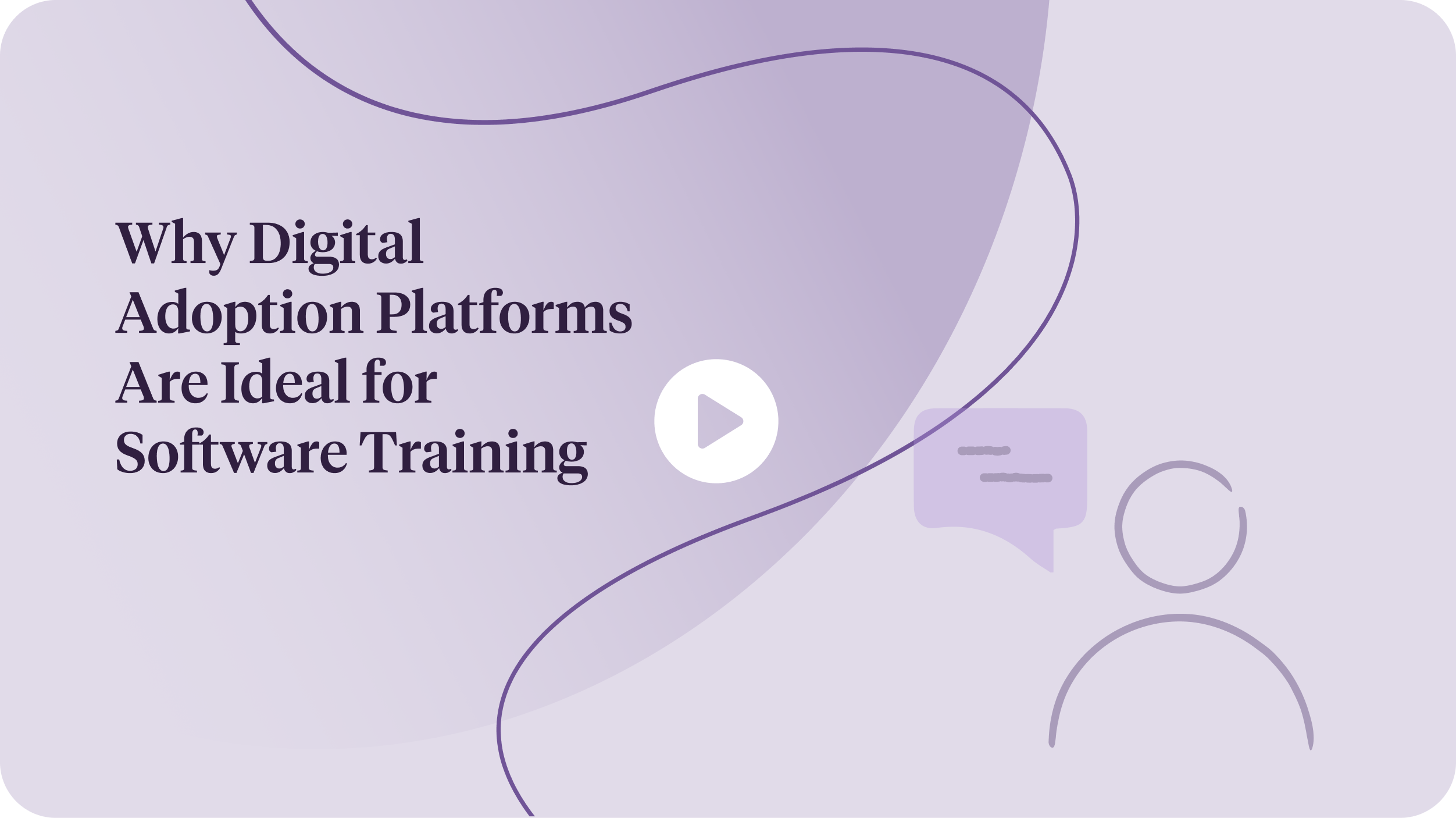Tango vs. other Digital Adoption Platforms
Working on an internal software training project?
Beware of Digital Adoption Platforms that are (ironically) hard to adopt.

How Tango compares
Tango is a modern version of a Digital Adoption Platform (DAP).
Other Digital
Adoption Platforms

Click-to-create
Click through your process and let Tango AI build your guide
No-code setup
Get started faster with minimal help from IT/security
Knowledge base compatibility
Integrate with your existing training tools
In-app walkthroughs
Embed instructions in the tools where people work
Seamless viewer experience
Enable everyone to follow processes on autopilot
Process adoption analytics
Eliminate friction points and prove your impact
Tango is the only Digital Adoption Platform that provides a great experience for end users and training managers.


Skip ahead to learn more about Tango Digital Adoption.
New-ish to DAPs?
A DAP is a tool designed to drive software adoption, proficiency, and engagement.
Before DAPs, there weren’t any tools purpose-built for software training.
Traditional methods were convenient for training managers, but not for end users.
Traditional methods were convenient for training managers, but not for end users.

Looking for a deeper dive?
Check out the FAQs below. 👇
How do DAPs work?
DAPs work in stark opposition to the traditional approach to software training—
which expects end users to memorize countless evolving processes or break flow to find answers.
Instead, DAPs help people learn software [while they use it]. This concept is called Real-Time Enablement.
From a technical standpoint:
DAPs use JavaScript and libraries like jQuery to create interactive overlays on existing software applications.
These overlays guide users through workflows with in-app instructions.
Popular features include on-screen guidance, interactive walkthroughs, simulations, hints, and nudges.
What makes a DAP different from a Knowledge Base or aLearning Management System?
Knowledge Bases are great for centralizing reference information. Learning Management Systems are great for video training courses.
But only Digital Adoption Platforms are purpose-built to enable software process adoption.
Tool Category
Knowledge Base
Learning Management
Digital Adoption
Purpose-built for
software training
software training
Learn more about today’s training and enablement tech stack.
What do most people get wrong about software training?
The main goal of software training is:
Activity
# of training sessions, # of guides you create
Adoption
% of people correctly completing the process
What makes DAPs uniquely designed to enable and measure software process adoption?
By embedding how-to instructions inside the tools where people already work,
Digital Adoption Platforms require the least amount of change for end users.
The result? Higher, faster, and more successful process adoption.
Reflected in an analytics dashboard with insights into user activity and impact. 🌟
Who are the big players in the Digital Adoption category?
Focused more on internal process adoption for big companies
Focused more on customer adoption for software vendors


Digital Adoption Platform benefits
When DAPs entered the chat, so did a more modern approach to software training.
By embedding instructions inside of the tools where people work, you can help end users learn software while they use it.
Why is this such a big unlock?
Software is the gateway to nearly everything knowledge workers do at work.
With a DAP, you can:
Make software
easier to learn
Minimize change
for end users
Accelerate
process adoption
Decrease costly
mistakes
Reduce training
and support costs
Increase mental energy
for more strategic work
Transform new hire
time-to-ramp
Drive higher
software ROI

Digital Adoption Platform limitations
While DAPs offer a great experience for end users learning new software, even their biggest fans say they’re clunky to operate, difficult to integrate, and complex to deploy.
Real G2 reviews OF A LEADING DIGITAL ADOPTION PLATFORM


“An excellent tool with a bit of a learning curve.”
Nov 06, 2023
" can do amazing things to help my users know whathas changed in Salesforce.
It is fully customizable in so many ways. There’s a learning curve on the rules engine, but once the lightbulb goes off, it’s much easier.
I am still learning things about what it can do more than two years into being my company's primary builder.”


" effortlessly steps the user through the app”
Feb 01, 2024
“I can show users how to complete an action step-by-step with quick tips.
[On dislikes] It’s not that I dislike jQuery, but not being a programmer, it took me a while to understand it and use it. But once I did, I love the power! It would be nice to have some more examples of jQuery usage."
Can you afford two years to get up
to speed on your DAP? 👀
How many people on your team know enough about jQuery to build content? 🤔
Curious about other common complaints?
Most DAPs are siloed from other knowledge systems, force disconnected learning experiences, and limit workflow delivery options and portability. 💀
Here’s a summary of what you might experience with a traditional DAP. 👇
Things you can do with Tango that you can’t do with other DAPs
Building a business case and looking for a summary for your boss?
Getting faster time-to-value is just the beginning. ✨
Get started without help from IT/Security—or altering any application code
Automatically create software walkthroughs by doing the process—without jQuery, CSS, and HTML experience
Capture those walkthroughs in one app or across multiple apps
Expand the number
of experts in your org who can easily share knowledge
Integrate software SOPs with your existing knowledge systems
Give end users a consistent learning experience everywhere they work
Make end users more successful
with minimal behavioral change
Get maximum value out of your digital adoption investment
Why Tango might
not be for you
Ready to talk
about your specific project?
























